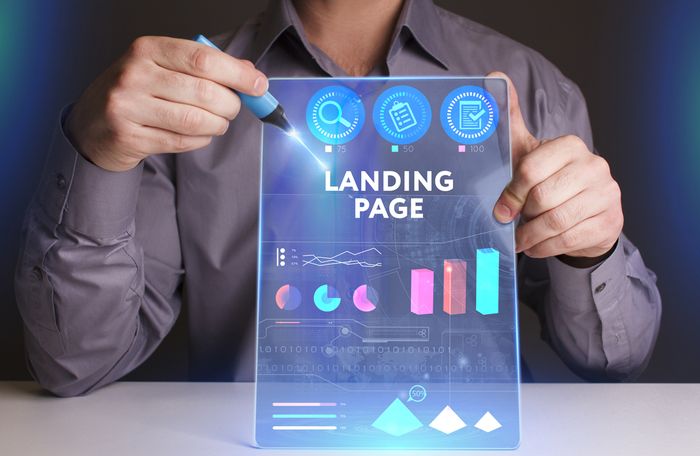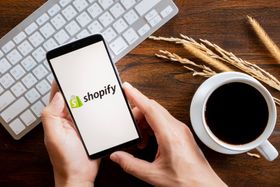Landing Page Personalization: A Simple Guide
Learn how to create personalized user experiences for higher conversions
Updated November 19, 2024.

First impressions matter. Your landing page is the first encounter customers have with your eCommerce store. It’s not just about telling them what you do but also personalizing their experience with your brand.
Today, personalization is no longer a nice to have. In fact, about 70% of your customers anticipate personalized experiences when shopping online. Let’s explore the essentials of eCommerce landing page personalization, how to use data effectively, and what the challenges of landing page personalization can be.
Meet the Expert
Jameela Ghann is a seasoned online store owner with over a decade of eCommerce experience. Apart from running Alora Boutique, she's also the marketing manager for Fera Product Reviews.
What Is eCommerce Personalization?
eCommerce personalization is the practice of creating tailored shopping experiences for each user.
It’s a comprehensive approach that enhances the online shopping experience. And it’s not just about product recommendations like “Customers who purchased this also bought” or “Similar products you might like.”
Personalization extends to tailored banners, gender-specific product displays, social proof messages about recent purchases, localized delivery information, and even personalized pricing. Some companies have gone to great lengths to personalize outbound messaging through channels like emails and SMS.
But how does this extend to landing pages?
» Explore Fast Simon's personalization solution to get started
The Essentials of Effective Landing Page Personalization
Landing pages, primarily designed to attract new visitors or ‘acquisition traffic’, offer limited user data beyond technical details like device, OS, location, and traffic source. Given these constraints, landing page optimization focuses on several key areas.
1. Focus on the Conversion Funnel
Landing pages are streamlined to guide users through a conversion funnel. The primary goal is to prompt users to take specific actions, such as clicking, filling out forms, or engaging with content. At this stage, it's crucial to rely on technical information about users because it will increase their chances of conversion. For example:
- Referral source If you take the user's referral source (e.g., social media, search engine) into consideration, you can tailor the landing page's content to match their context. Say the user clicked on a Facebook ad, you can highlight the ad's message or offer on the landing page to maintain consistency and relevance.
- Loading time You can make lighter versions of your landing page available to account for users with slow internet connections. This will help to reduce bounce rates because the lighter version will load faster.
2. Tailor for Language and Region
For global outreach, consider tailoring landing pages to different languages and regions. This approach acknowledges the diverse user base you might attract, enhancing the user experience and engagement. Even CTAs may need customization for varying audiences.
3. Device-Specific Optimization
You may have to create separate landing page versions for different devices, such as mobile vs. desktop. Factors like different screen sizes, touchscreen vs cursor navigation, and website responsiveness come into play. Plus, users may switch between devices, meaning the transition between landing page versions should be seamless.
» Interested in mobile? Follow these best practices to optimize your website for mobile
Using Data for Landing Page Personalization: A Short Case Study
In a recent case with one of our clients, we implemented a smart strategy for their landing page. Rather than presenting a generic "one-size-fits-all" approach, we tailored the landing page to showcase different product images based on the user's device (iOS or Android).
The result? A significant boost in sales, specifically a 10% increase, highlighting the power of personalized landing pages in driving conversions.
There are many ways you can use data to inform how you display personalized content to your users. To drive sales for a site specializing in specific products, we adopted a strategic approach:
- Higher-priced products: We showcased higher-priced products, focusing on specific offerings that aligned with the site's niche.
- Dynamic keyword-based headers: Using Google Ads data, we dynamically adjusted the landing page header based on the user’s search keywords. This ensured immediate relevance. For example, a user searching for “cheap trousers” would see a header promoting “Cheap Trousers” alongside personalized product listings.
- Personalized content and delivery: We ensured content on the landing page was dynamically generated to match user intent, offering various product categories and delivery conditions customized to different deals.
- Continuous A/B testing: Crucially, we recommend ongoing A/B testing to refine strategies. We tested different scenarios and rigorously analyzed the results. We kept successful approaches and adjusted unsuccessful ones.
Through this iterative process of dynamic personalization and continuous A/B testing, we saw a 10% growth in sales.
Challenges of Landing Page Personalization
Privacy
The privacy landscape is intricate, with several crucial aspects to consider when implementing personalization strategies. Let's break it down:
- Avoid hyper-personalization: Hyper-personalization—providing an exceptionally personalized experience to users based on preferences—can feel intrusive because it includes personalizing all touchpoints from products and services to content. Striking the right balance between data privacy and personalization is important.
- Comply with privacy regulations: Different countries have varying privacy regulations (GDPR for Europe and CCPA for Canada), and it's imperative to adhere to these laws to avoid legal complications.
- Get behind the cookieless future: As we move towards a cookieless future, user data collection will require explicit consent or zero-party data. Offering value in return can encourage users to share data.
- Balance user data and benefits: When requesting user data, provide tangible benefits in return. This trade-off is crucial for maintaining trust and enabling effective personalization.
- Anonymous personalization: Consider anonymous personalization, which focuses on in-session behavior without carrying data over to subsequent sessions. This approach complies with various privacy regulations and allows for data collection within a single session.
Cost
Effective personalization may involve costs, but it’s an investment that can yield significant returns. Maintaining a healthy balance is key, and this can be achieved through A/B testing and diligent ROI tracking.
Fortunately, there’s a personalization solution to fit almost any budget. Some options, especially for platforms like Shopify, offer free entry points, such as the first 100 users or 1000 API calls at no cost. These trial periods can be used to assess their effectiveness, build hypotheses, and determine ROI before committing.
Scalability
Scalability in personalization typically leans towards expansion, not downsizing. Larger companies often find it easier to personalize user experiences:
- More data: Bigger companies have access to extensive data, enabling sophisticated personalization strategies.
- Segmentation: They can create numerous customer segments, catering to specific user groups.
eCommerce Landing Page Personalization: Tailor Shopping Experiences for Big Results
eCommerce landing page personalization is a necessity to meet the growing demand for tailored online experiences. To optimize landing pages, focus on the conversion funnel, cater to language and region, and adapt for different devices. Remember that data-driven personalization can help you boost sales, ultimately setting your business apart, increasing conversions, and driving substantial growth.
» Explore other places you can use personalization on your eCommerce store




